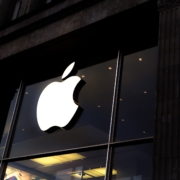JC Penney Aims to Adore its Core
There is nothing like a core customer. Core customers already know what is great about your brand. Core customers are valuable assets. In branding, your priority must be to adore your core.
But, apparently, core customer retention is just not as exciting or attractive to most marketers. They are always chasing the next, most contemporary, most hip cohort. Replacing regular customers with those who are only visiting your brand occasionally is a formula for failure. Spending resources to attract customers you do not have and who do not like you while losing customers you do have and who love you is a faulty brand-business strategy. And yet, the allure of the cool, cutting-edge progressive customer appears to be too much to ignore.
So, it is a marketing rarity when a brand, and especially a CEO, decides to focus on core customers. This is precisely what the CEO of JC Penney has committed to do. According to The Wall Street Journal, Marc Rosen will be focusing JC Penney on its traditional, core customer base, those who already patronize JC Penney: budget conscious American families. As Mr. Rosen told The Wall Street Journal when comparing his strategy to previous failed attempts to revitalize the brand, “The difference this time is we are loving those who love us. We need to give them more opportunity to come back and find things they love.” Mr. Rosen is committed to repairing and restoring JC Penney’s core customers’ relationship with the brand. He wishes to reinforce what these customer like and love about the brand. And, he hopes that by taking these actions the core customers will frequent JC Penney more often.
Amen.
If you think focusing on the JC Penney core customer base is out-of-step with our times, think again. There are over three decades of data showing that focusing on the core is more profitable and better for the overall brand-business than chasing a possibly elusive group of customers. Data show that it is easier to encourage a core customer to use the brand a little bit more than to try to attract a new customer who does use the brand at all. Especially in a revitalization situation, as with JC Penney, one of the brand’s critical objectives must be to stop the shrinking of the core customer base while increasing their frequency of use. A small increase in core customer frequency can make a huge difference to brand health.
In a seminal, data-laden article in Harvard Business Review from 1990, Frederick F. Reichheld of Bain Consulting and W. Earl Sasser of Harvard Business School looked at service companies’ attempts to satisfy customers. They found that the successful companies aimed for zero defections among the customer base. In “Zero Defections: Quality Comes to Services,” Reichheld and Sasser discussed the danger of losing core customers (customer defections). They wrote, “Customer defections can have a surprisingly powerful impact on the bottom line. They can have more to do with service companies’ profits than scale, market share, unit costs and many other factors usually associated with competitive advantage. As a customer’s relationship with the company lengthens, profits rise. And not just a little. Companies can boost profits by almost 100% by retaining just 5% more of their customers.” The research showed that just 5% of core customer retention increased profits from 25% to 125%!
Reichheld and Sasser pointed out that in general there is a tendency to focus on costs and revenues while ignoring the cash flows across a customer’s life-time. Brands tend to ignore the increased profitably of long-term customers. Writing in Harvard Business Review, Reichheld and Sasser said, “Across a wide range of businesses, the pattern is clear: the longer a company keeps a customer, the more money it stands to make.”
Aside from using a brand more frequently, long-term customers account for declines in operating costs. This is because brands have knowledge of the customer allowing the customer to be served in a more efficient and effective manner. Core customers are willing to pay more for premium products or services. Additionally, long-term customers are good marketers as they recommend the brand to friends and family. Furthermore, customer acquisition is increasingly expensive. Data show that acquisition costs are climbing due to multiple media options, technology and hardware. It costs even more today to acquire a new customer than to satisfy an existing one.
A revealing chart in the Reichheld-Sasser article showed why customers are more profitable over time. Core customers already represent a base profit for the brand while acquisitions drain monies. It costs 4-6 times as much to attract a new customer as it does to keep a loyal customer. The longer a customer stays with the brand, there is an increase in frequency of usage, increasing profit even more. Add to these monies the profits from reduced operating costs, profits from referrals and price premiums and you start to see a core customer’s real worth.
Other data on core customers and profitably are equally compelling. Research has shown that a loyal customer is 8 times as valuable as those who just consider your brand. And, as JC Penney learned over the course of its past decades, losing just a small percentage of core customers accounts for a disproportionate amount of lost income for the brand. Loss of core customers also carves into the brand’s image and reputation.
Of course, a brand needs new customers. But a singular focus on new customers at the expense of losing the customers who love you is death-wish marketing.
The history of JC Penney since 2011 is littered with examples of seeking the new customer at the expense of disrespecting the core customer. In 2011, Board member activist investor Bill Ackman urged for the hiring of Ron Johnson whose success at Apple stores was legendary. The goal was to modernize and rev-up the image of JC Penney while seeking new customers who were less wed to budgets and promotions. Although investors approved of Mr. Johnson’s strategy, it turned out that core customers did not. According to the business press, the execution of Mr. Johnson’s strategy was “one of the most aggressively unsuccessful tenures in retail history” and that Mr. Johnson “had no idea about allocating and conserving resources and core customers.” Insisting that there was no time for testing, Mr. Johnson “… immediately rejected everything existing customers believed about the chain and threw it in their faces.”
After this fiasco, JC Penney thought it could leverage the death-march of Sears by focusing on appliance sales a category that JC Penney had stopped selling in 1983. This approach did not work either. Stores like Lowes and Home Depot had the appliance business covered. JC Penney could not compete. Further, appliances are purchases with long time frames of 12 years or more. Appliances alone are not conducive to generating frequency. JC Penney’s focus on large appliances left the brand at a disadvantage in smaller household wares such as glassware and dinnerware, items core customers wanted.
As The Wall Street Journal pointed out, JC Penney then segued into fitness studios, videogame lounges and style classes further alienating the core customer base. Sears tried this by offering home buying (Coldwell Banker), credit cards (Discovery) and investments (Dean Witter). Sears, too, lost its credibility with core customers.
JC Penney was basically on life support by the time Covid-19 hit. JC Penney filed for bankruptcy in 2020. After seven months, JC Penney emerged from Chapter 11.
Mr. Rosen is correct in his approach to revitalizing JC Penney. Core customers must be protected and cultivated. Core customers are at the heart of the brand.. The core supports the store.
Energies must be devoted to the core customer base. The core customer will profitability finance the revitalization while providing the platform for the future. Focusing on core customer retention while increasing core customer frequency is the key. Mr. Rosen is committed to focusing on what core customers like and love about JC Penney. This will be the pathway to high quality revenue growth leading to enduring profitable growth. In a birthday ad, JC Penney is 102 years old, the birthday song singer is an ebullient woman who is noted as a “superfan” of the brand.
It is sad that many marketers find core customers boring. Core customers like the brand’s core equities, which so many marketers feel are out-of-date. The thinking is that we already have these customers so let’s find new ones. This is the kind of arrogance that leads to brand decline. The goal must be to modernize the brand’s core equities. Show that core equities are relevant to core customers and today’s newer customers, as well. Focusing on the core is not a chore nor is it a bore. When revitalizing a brand or building your brand into greatness, there is nothing more important than adoring your core.










